Bespoke fabric artist Natasha Hulse specialises in three-dimensional appliqué works that are then upholstered onto headboards, furniture even lampshades
Tell me about your background? I started my journey in textiles long before any degree – painting on the walls at home, plain lampshades that needed something interesting added to them and my clothes.
After a foundation year at Central Saint Martins I took my degree at Chelsea College of Art and Design and then went on to do an Erasmus at F.I.T in New York City where I took the fashion print course.
With the new technical abilities I had picked up in New York I became a digital womenswear print designer working. But five years after my degree I decided to move away from digital and go back to painting on fabric, taking on my first headboard commission for Firmdale Hotels. I followed my heart and launched my business Natasha Hulse, making slow, handmade artworks for interior designers. I have never looked back.
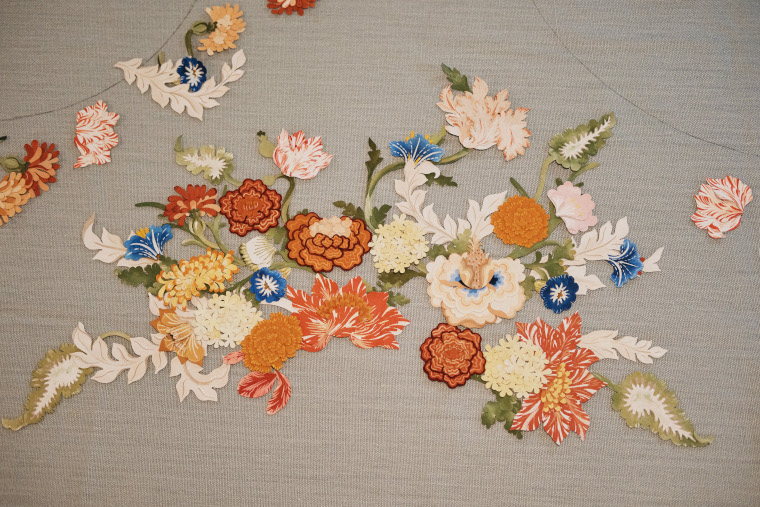
Can you describe your creative process? Nature plays an integral role in everything I do. I start with finding out about the client’s external environment, what the local flora is like and how I can bring that into the design of the appliqué artworks. I then ask the client what their favourite flower is, are they looking to add anything personal into the artwork like an heirloom fabric that has beenhanded down to them.
I use floral symbolism within my work, looking at master painters from the Renaissance period. Recently for Savoir I looked at how artists such as Ambrosius Bosschaert and Rubens would paint fully opened, striped tulips to symbolise life and its completed achievements, while the unopened tulip in one solid colour signifies powers awaiting fulfilment.
I also think about the weight of the fabrics found within the room and try to create a harmonious
balance between the headboard/artwork and the scheme. I get to know my client and understand what shades of colours they do and don’t like, what flowers in my portfolio they naturally gravitate towards. Once I have all my information I compile a list and start designing a visualisation of the artwork.
Once I start making I work on a few flowers at a time and build them up and arrange the appliqué artworks into the agreed composition. I use fabric and nature to tell a story within my work, nothing is one dimensional, nature is heavily patterned and layered so I like to bring that into my work too. I also believe we build a story over our lifetime and that everything is layered. I love the idea of fabric stacking on top of fabric representing years of a personal journey. Perhaps a hand stitch that symbolises the journey they have walked through this world. Everything is considered!
Colour is one of my great loves. I often set colour palette exercises, restricting the amount of colours I use in an artwork to three and then doing the same with ten colours, this helps me play with colour and understand it better. By doing these exercises it helps me build my colour knowledge and train my eye to unusual colour combinations.
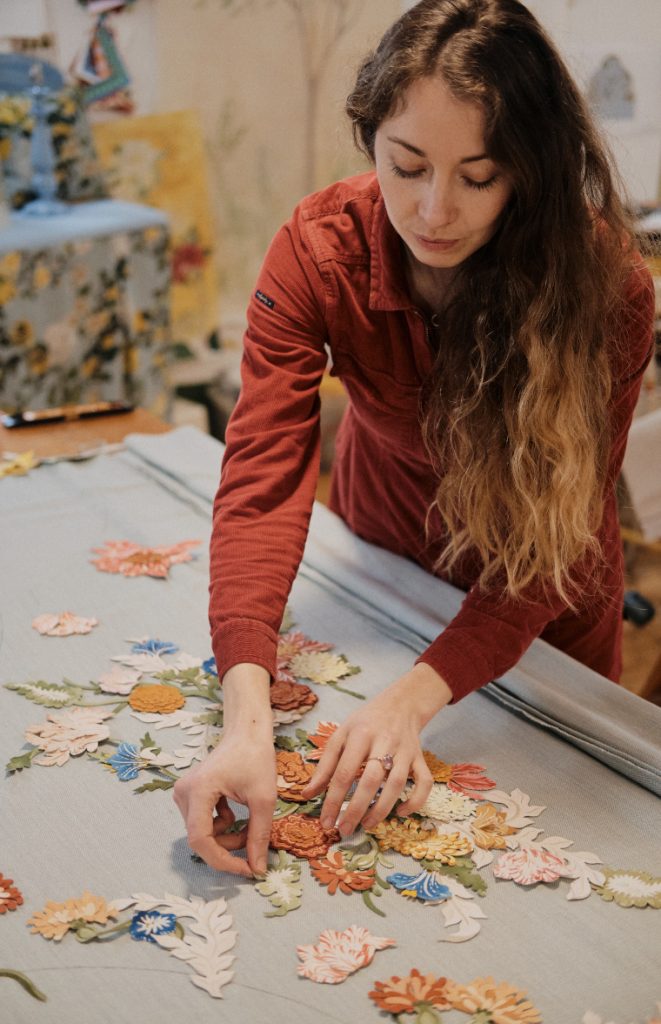
What is the appeal of transforming your paintings into applique? I love the sensitivity and ornate delicateness to my practice. I am a hands-on learner. I touch, assemble, explore fabric boundaries and spatial composition through play and exploration, for me my work is my way of having a good conversation. I express myself through texture and pattern, I learn this way too.
Most of my work is made from an emotional connection or a feeling within a space that I want to
replicate. I love the history of fabric and the hands that have made that fabric before it has got to me. There are so many journeys to a piece of cloth and I love that I am able to continue the process and develop it further. I am a very instinctive person, my practice allows me to express what I am feeling without using words in the moment. I build, take away and deconstruct elements to get my vision across. I am surrounded by textures, patterns and nature and I respond to that by recreating it in my own way.
Traditional craft is so integral to my work, I know how to use modern techniques such as digital, silk screen but there is something so precious about a handmade piece that can never be replicated exactly ever again. It’s a sacred thing, the way someone can interpret something through their eye to hand. The method I use is unique to my aesthetic. I came up with this technique by combining four traditional processes together: painting, appliqué, stitch and furniture design. I love traditional techniques but I also love the idea of taking something and making it your own, with your own ways and voice.
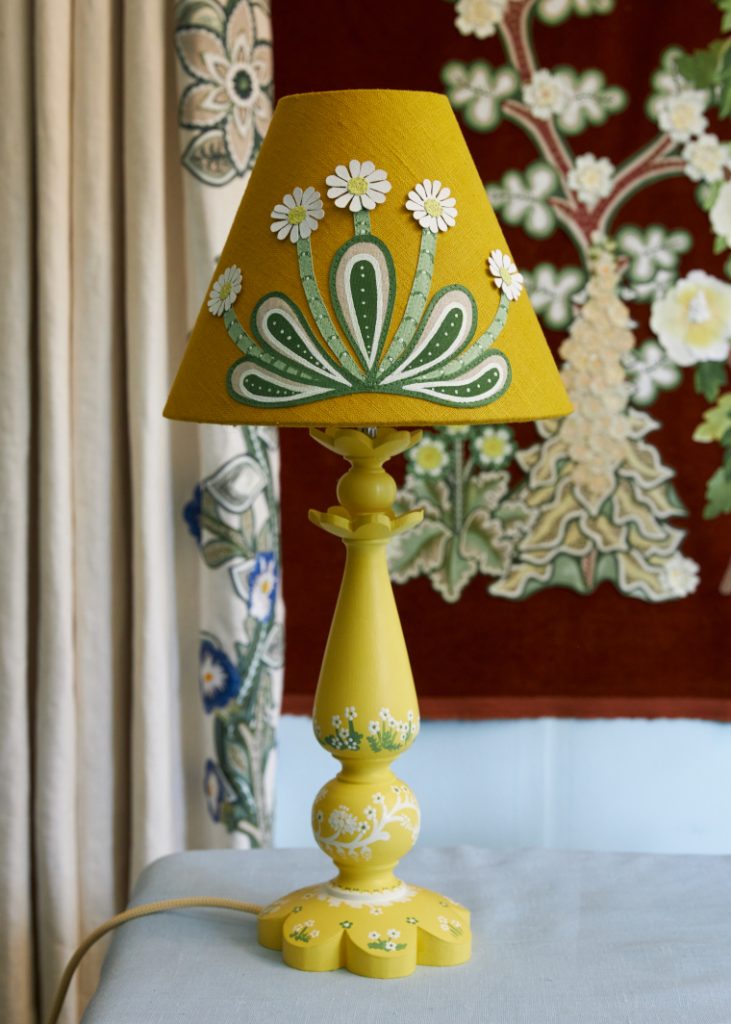
Tell me about your recent piece for Savoir beds. Claudia is Savoir’s most popular headboard shape inspired by the Rococo, late baroque period. Knowing this I researched the baroque period. It was a hugely layered style, ornamental and incredibly intricate. It’s a period that celebrated and harmonised architecture, furniture design, interior and art, all coming together. They used lots of hand painting as well as layered tapestries. With this in mind I made my designs incredibly intricate and layered too.
The colour palette for this headboard was taken from the master painters who specialised in floral art during that period. I also looked at European botanists who were also using this colour palette of blue, orange, red and yellow. I looked at a lot of Dutch painters who used a central bouquet for their subject and noticed these were always in full bloom, representing vibrancy so again I mimicked this in my design.
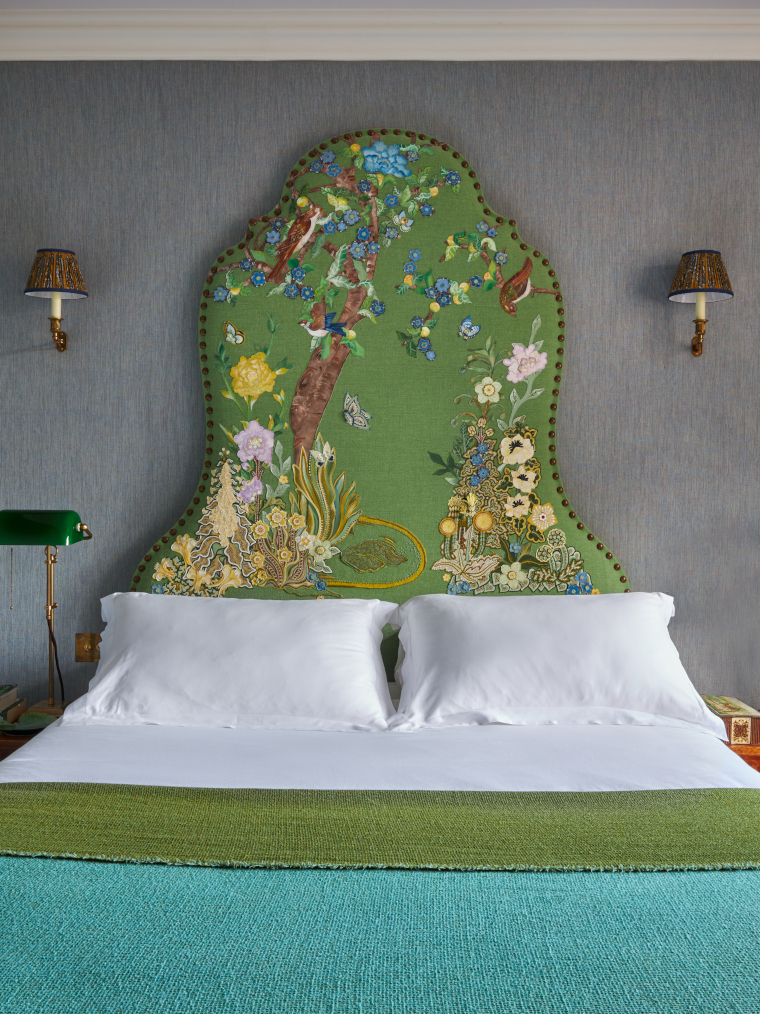
What are you working on now? I am working on a hugely exciting collaboration with Lorfords contemporary, we have two headboard designs coming out. The emphasis on eco-friendly interior furniture is central to this collaboration. I have used remnants from their upholstery studio and vintage linen that they have re-dyed.
I am also working on something special for Haines Collection for Focus, the concept is to create circular designs within the luxury market. I will be creating bespoke, hand crafted artworks using remnants, supplied by Jules Haines, into one of a kind pieces of furniture and artworks.
If you enjoyed this, you may also like my interview with Aiveen Daly
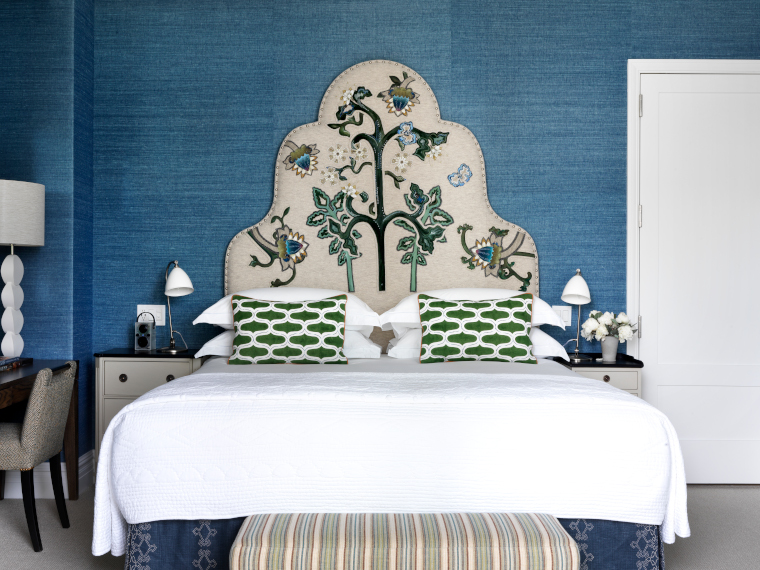
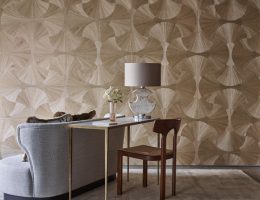
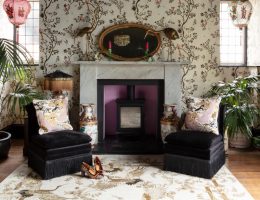
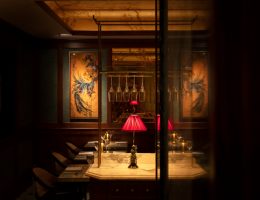
[…] I have always been interested in bringing together different materials and textures within my work. Appliqué allows me to combine layers in quite a quick way, enabling me to build depth into my […]